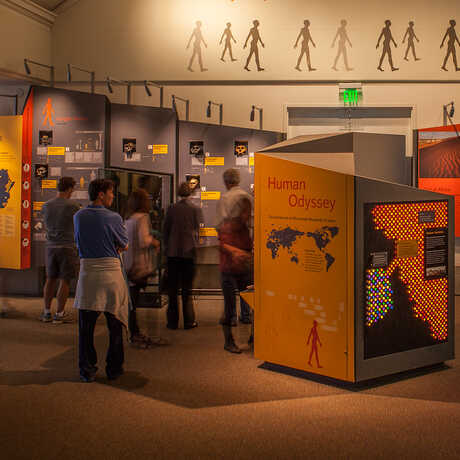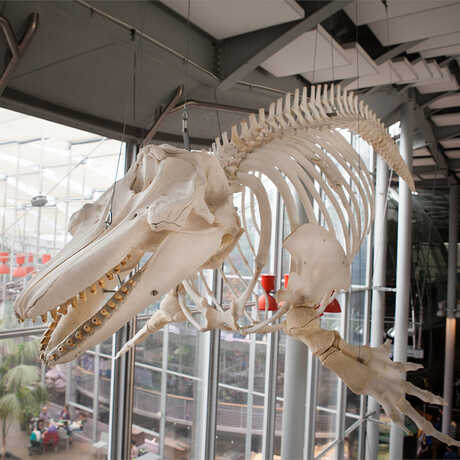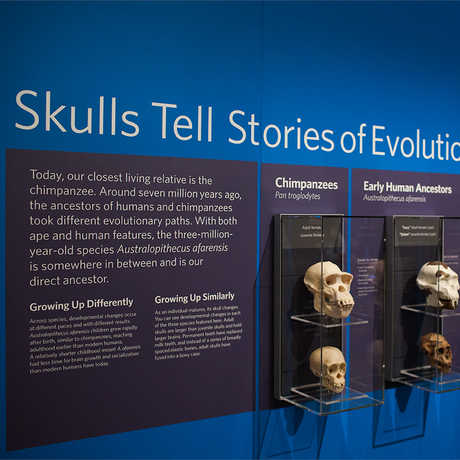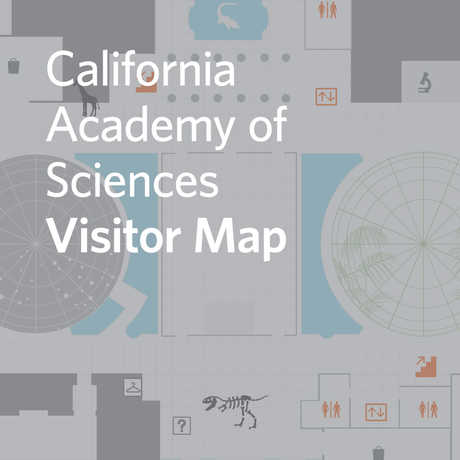Visit an aquarium, planetarium, rainforest, and natural history museum—all under one living roof.
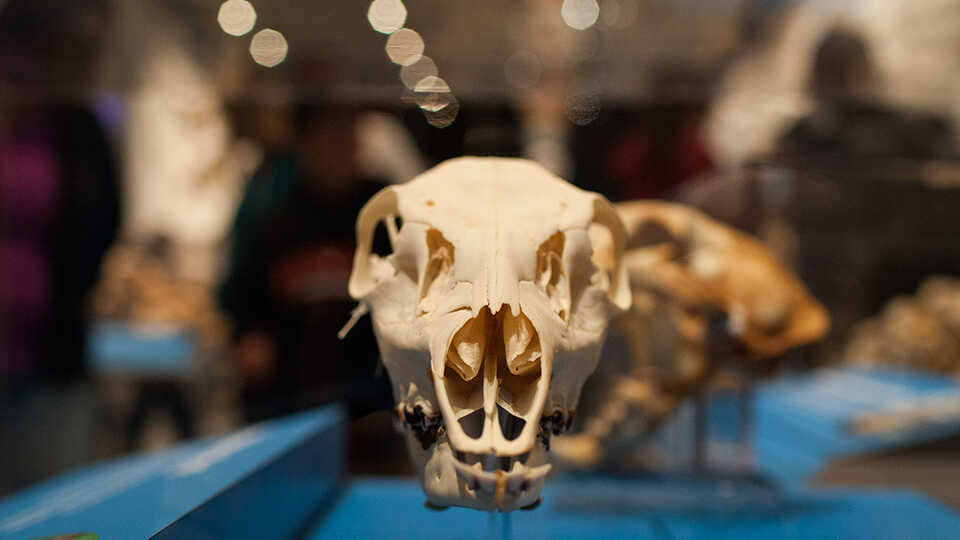
Skulls Can Tell Stories as Big as Evolution or as Small as a Shrew’s Identity
Although skulls are common to all vertebrates, they vary from species to species, and even among individuals of the same taxonomic group. Knowing what to look for—both the similarities and the differences—can provide a fascinating perspective on how animals are related, what they eat, how they avoid being eaten, how they're responding to ecological change, and where our own species fits into the evolutionary picture.
Tree of life
Scientists have come to understand a great deal about the evolution of skulls by studying the fossil record. They know that prior to about 500 million years ago, no creature possessed a skull. Over time, skulls changed from a primitive collection of bony plates to the highly reinforced, structural marvels most vertebrates carry around today. Just as important as a skull’s age are its physical characteristics, which provide important clues about how the creature it came from is related to other animals. For example, analysis of the teeth of a tiny, long-nosed mammal from northern Namibia, known as the round-eared elephant shrew (Macroscelides micus), helped Academy scientists recognize it as a new species, distinct from a similar creature living nearby. Skull characteristics have also played a key role in illustrating the complex map of human evolution, most recently by confirming that we are more closely related to an extinct human-like species, Australopithecus afarensis, than to our closest living relatives, chimpanzees and other great apes.
Predator vs. prey
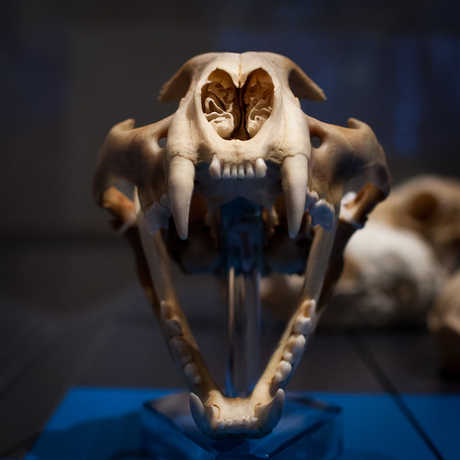
In addition to what a skull might say about an animal’s place on the family tree, it can also tell us about that creature’s role in an ecosystem—including how it views the world. The location of eye sockets in the skull is one of the best indicators of whether an animal plays the role of pursuer or pursued. Prey animals, such as antelope and doves, tend to have eyes on opposite sides of their heads. This provides a nearly 360-degree field of view at all times, a tremendous advantage when surveying the landscape for movement and possible threats.
In contrast, predators, such as lions and owls, tend to have forward-facing eyes. While this limits their field of view, it allows the view that each eye sees to overlap with the other. What might sound like redundancy actually heightens the animal’s ability to pick up on fine visual details. More importantly, each eye’s similar, but slightly different, view allows the brain to more accurately perceive depth and distances, a huge advantage when pursuing prey at break-neck speed.
Diet and Health
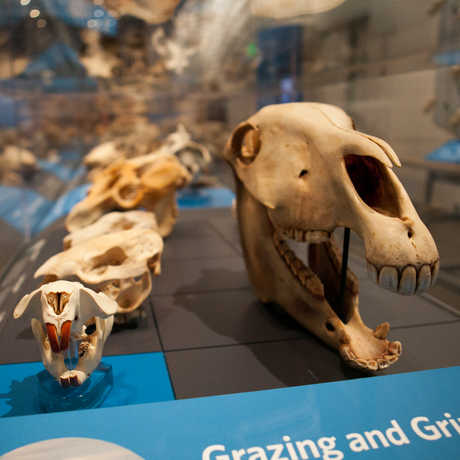
Teeth, jaws, and other skull features can provide important clues about what an animal ate, how it captured and consumed its meals, as well as its state of health when it died. Carnivorous mammals, for example, are well known for their long, dagger-like canines that enable them to catch, hold, and puncture the flesh of their prey. They also have highly adapted premolars—the top and bottom sets are shaped to mesh together like scissors to shear through muscle, tendon, and bone. In contrast, carnivorous reptiles like alligators have only rows of canine-like teeth of varying sizes. This enables them to catch and hold prey, but not to easily disassemble it, so they tend to gulp their meals whole or in large chunks.
Life in the wild can take a heavy toll on teeth and jaws. By analyzing wear patterns, scientists can find interesting clues about an animal’s food habits and health. For example, killer whales, or orcas (Orcinus orca) of the type featured in “A Specimen’s Path” are thought to feed largely on sharks, but there have been only a handful of observations of them doing so. Extensive wear on the teeth of Orca O319 and other “offshore” orcas has helped to fill in this picture by providing important indirect evidence of their regular diet of these rough-skinned fish. Scientists have also analyzed wear patterns in and damage to the teeth and jaws of southern sea otters (Enhydra lutris nereis). By analyzing the skulls of more than 1,200 specimens in the Academy’s collection, researchers found that not only are tooth and jaw joint problems common in sea otters, they're also significant enough to shorten the lives of the animals afflicted by them.
Response to ecological conditions
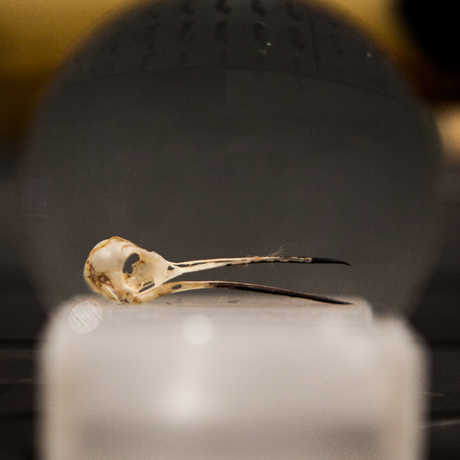
Skulls can also reveal signs of both physical and behavioral adaptation to changes in competition, temperature, and other ecological conditions. In California, for example, scientists have observed coastal populations of coyotes dining on a surprising meal type: seal meat. Suspecting that this was not always the case, the researchers analyzed much older coyote skulls. Based on the chemical composition of the bone in these skulls, they could tell that seal meat is a relatively new item on the coyotes' menu. To understand what might have caused this change, they also analyzed the skulls of grizzly bears and found clear signs of seal-meat consumption. Only after grizzlies had been hunted to extinction in the state, the researchers concluded, did coyotes move in to take advantage of this rich food source.
Bird skulls, too, show signs of ecological adaptation. Scientists have found a good example of this in California song sparrows. Although bird beaks are most commonly associated with feeding, a group of researchers has discovered another possible function: temperature regulation. They noticed that song sparrow beak size varied from one part of the species’ range to another. To test whether beak size might correlate with temperature, they measured hundreds of museum specimens, including many from the Academy’s collection. Those measurements revealed that across California, bill size matched the scientists’ hypothesis. Sparrows closer to the cooler coast have smaller bills, while those living in warmer, inland areas sport larger ones. What this might mean for beak size in the future should global temperatures continue to rise is difficult to predict. It’s clear, however, that skulls will continue to provide clues to these and other evolutionary transformations.
Share This
Academy scientists partnered with Google to image specimens from our research collections using an advanced, automated 3D technique. The results? Jaw-dropping.
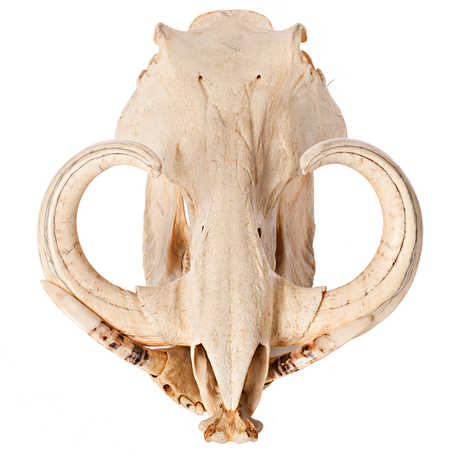
For more than 60 years, Academy field associate Raymond Bandar (1927-2017) collected thousands of skulls. In a ten-case display curated by “Bones” Bandar himself, visitors to the Naturalist Center can explore a variety of skulls featuring curious traits and abnormalities.
